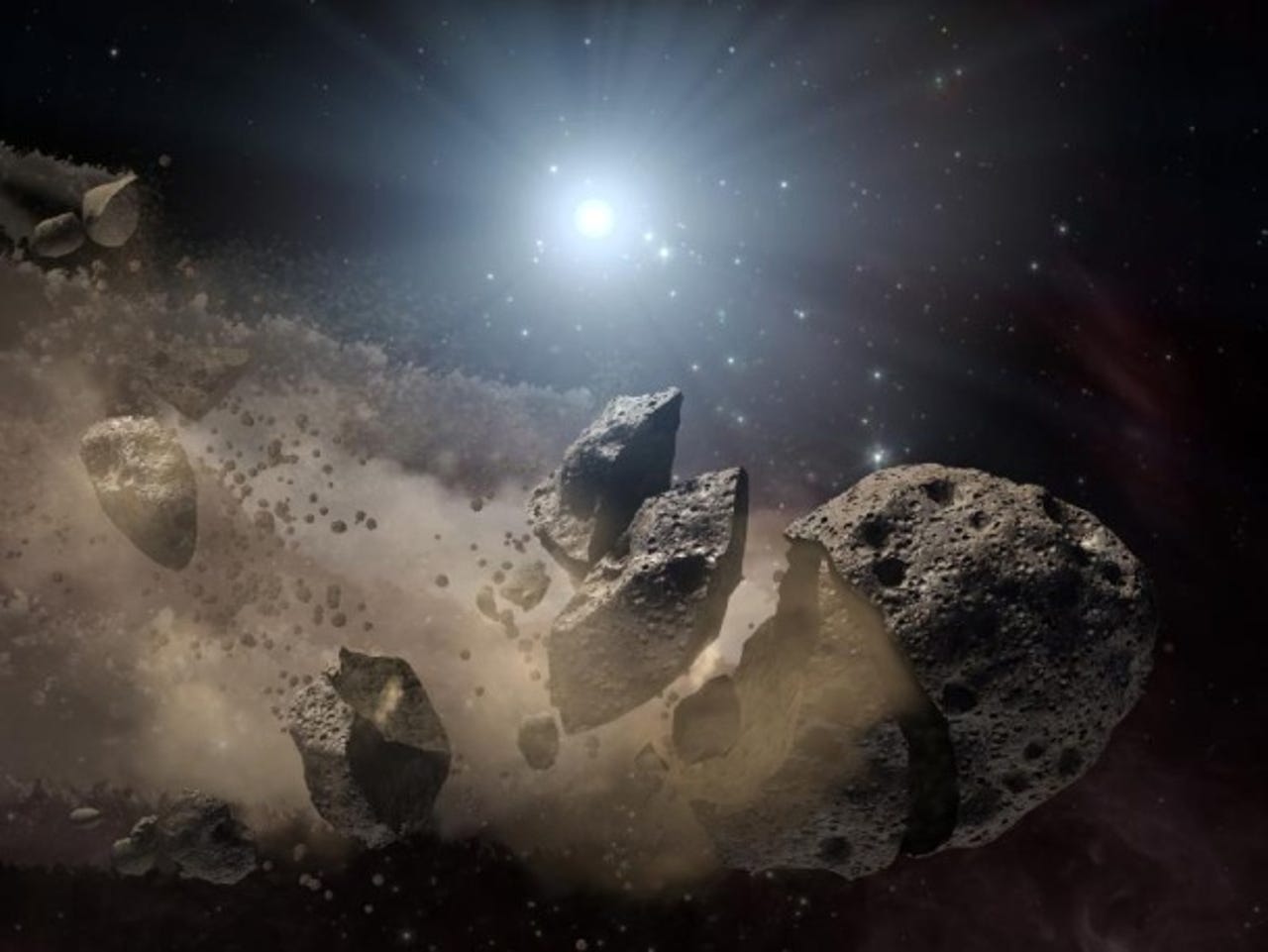Nasa hunts down killer asteroids


Artist's impression of a broken asteroid
For most of the threats to mankind — war, famine, disease, environmental meltdown — technology plays second fiddle to wisdom as our best option to avert disaster. But one catastrophe can only be overcome by technology, and lots of it: asteroid impact.
The accepted wisdom is that there have been five extinction-level impacts in the last half-billion years, each one wiping out on average half the species on earth. Unlike the dinosaurs, we have spaceflight: with current technology and enough warning, we could nudge an incoming asteroid out of harm's way. But we have to know it's there, which is where Nasa comes in.
See more space photos on ZDNet UK.
Nasa's Wise probe
Launched in December 2009, Nasa's Wise mission — the Wide-field Infrared Survey Explorer — has scanned the sky twice between January 2010 and February 2011. As well as doing deep-space infrared astronomy, it also hosted the Neowise near-Earth orbit asteroid-hunting mission, and those results are out.
Nasa now thinks that 90 percent of the largest near-Earth asteroids have been found and that there are around 19,500 mid-size ones out there — a much smaller number than the 35,000 previously estimated.
See more space photos on ZDNet UK.
Density of asteroids in solar system
In this image, with the sun in the middle and the green dots representing Mercury, Venus, Earth and Mars, the red dots show the density of the asteroids sharing our space. The right-hand side of the picture shows what was thought to be the case before Neowise; on the left, the new model has 40-percent fewer asteroids. But there are still plenty out there.
See more space photos on ZDNet UK.
Asteroid census
We now think we know about nearly all the very large asteroids among the inner planets, and around half of the medium-sized ones that also represent a serious threat to life on Earth. Neowise has given astronomers confidence that there are far fewer unknown ones yet to be discovered, although the smaller asteroids remain largely hidden.
The most recent extinction-level event is widely thought to have been an asteroid 10-15km in diameter that hit Mexico around 65 million years ago, causing the 180km-wide Chicxulub Crater and triggering the extinction of the dinosaurs. There is still much argument about the details. Smaller impacts, although highly disruptive and unwelcome, are less likely to have such long-lasting effects on the global ecosystem.
See more space photos on ZDNet UK.
Finding dark asteroids graphic
Infrared, which is normally disrupted by the Earth's atmosphere, is a much better way to detect asteroids than visible light. Asteroids vary highly in how much sunlight they reflect (the albedo), from snowball-white to coal-black. But as they emit infrared rather than just reflect it, they present much more consistent targets in that part of the spectrum.
Wise used very sensitive infrared detectors above the Earth's atmosphere, and provided a unique chance to do the most accurate and complete survey of asteroids to date.
Get the latest technology news and analysis, blogs and reviews delivered directly to your inbox with ZDNet UK's newsletters.